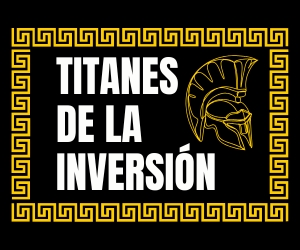Learn all about Francis Chou, an investment genius, his winning strategy, and the firm Chou Associates. Transform your financial approach today.
Home
»
Investments
»
DIFFERENCES BETWEEN CROWDFUNDING AND TRADITIONAL FINANCING
Explore the distinct differences between crowdfunding and traditional financing. Which methodology best suits your needs? Venture into the world of trading and make informed decisions.

Comparison of Processes
When we embark on the journey of financing a project, the first crucial decision is choosing between crowdfunding and traditional financing. But which one is the better option? Their processes are more like a dynamic duo than sworn enemies, but they still have their differences. Let's break them down, shall we?
Crowdfunding: The New Digital Era
Crowdfunding aims to harness the power of the crowd, allowing many people to contribute small amounts of money for a project. Think Kickstarter or Indiegogo: platforms where creativity meets capital in small funding bursts.
The process begins with:
Uploading your project: Detail your idea and the requested funds. Your challenge is to make this sound like the next blockbuster movie.
Engaging the audience: Utilize social media and viral marketing. If memes can work magic, so can your project.
The risks include the potential of not reaching the goal and the saturation of similar projects. So, even if your idea is revolutionary, be prepared to compete in a sea of unicorns.
Traditional Financing: The Glamour of the Old World
Traditional financing is like an exclusive club: banks, investors, and the whisper of Wall Street CEOs. Here, it’s not about the crowd but convincing institutions that your idea is a safe bet.
The general process includes:
Project presentation: Prepare a solid business plan. No doodles on napkins; these guys expect colorful Excel charts.
Risk assessment: Analysts will review your idea as if it were Coca Cola's new secret recipe.
Negotiation: This is where you prove that diplomacy is an art. Think of it as playing chess, only with twenty-dollar bills.
The advantage is that these institutions can offer large amounts of money at once. However, securing the financing can be as challenging as climbing Everest.
Advantages of Each Method
When deciding between crowdfunding and traditional financing, a key is to consider what benefits each approach offers. After all, who doesn't like a little competitive edge?
Winds in Favor of Crowdfunding
One of the most attractive features of crowdfunding is its accessibility and speed. Remember those days when a simple click could give you access to a whole world of possibilities? Well, it still does. Here are some of its noteworthy advantages:
Diversification of risks: Relying on multiple investors means a single failure doesn't spell total disaster.
Early market testing and validation: If the community is interested in your idea, you already have an audience.
Flexibility: Changing strategies is much easier when you don't have an entire corporation breathing down your neck.
One drawback? The constant pressure to keep your backers informed, which can be more exhausting than a 24-hour marketing campaign.
The Power of Traditional Financing
Established financial institutions offer the possibility of ensuring stability and market recognition. Who wouldn’t want to feel backed by a reputable bank?
Here’s why this option remains relevant:
Larger amounts of funding: Dreaming big is possible when money isn't an issue.
Credibility: Partnering with established institutions can boost your reputation faster than a viral tweet.
Professional support: Lobbying and connections can open doors that seemed closed a moment ago.
However, this method remains rigid in terms of processes and paperwork. Often, getting in is the easy part; the true challenge lies in staying in.
Use Cases
Understanding the differences between crowdfunding and traditional financing is just the beginning. Now let's review cases where each method shines brighter than neon lights in Las Vegas.
Tech Startups: A Haven for Crowdfunding
Have you ever wondered how things would be if Spotify or Kickstarter hadn’t received funding? Tech startups often turn to crowdfunding as a means to validate and eventually launch their products to market.
Advantages:
Early product validation: Crowdfunding campaigns allow developers to receive feedback before moving to large-scale development.
Access to an initial user base: Turning backers into their first customers is a masterstroke.
Now, let's move to the traditional side...
Infrastructure Projects: The Banks' Domain
Infrastructure projects, like building a bridge or a hospital, require large-scale funding. And, let's be honest, there's not enough crowdfunding for these public spending behemoths.
Reasons:
Massive capital needs: The logistics and materials required need funds that possibly no group of individuals can cover.
Regulatory framework: Financing ensures long-term compliance and accountability.
In essence, each method has its place, varying depending on the type of project and target market. Borrowing the words of Henry Ford: "Failure is simply the opportunity to begin again, this time more intelligently." Why not apply this wisdom to your financing strategies?
YOU MAY ALSO BE INTERESTED




